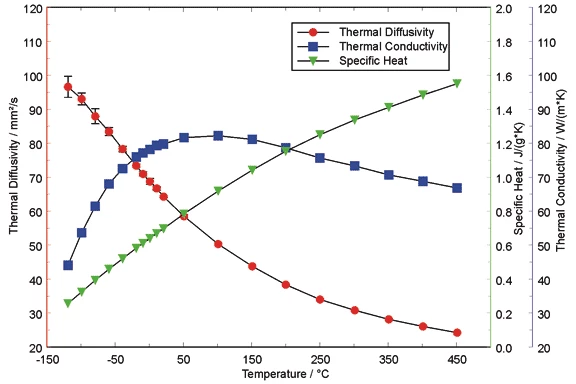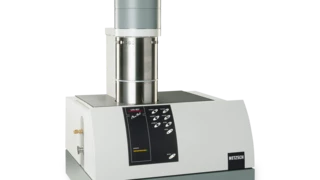Materiały nieorganiczne
Polycrystalline Graphite - Thermal Conductivity
Graphite materials are known to show a maximum Thermal ConductivityThermal conductivity (λ with the unit W/(m•K)) describes the transport of energy – in the form of heat – through a body of mass as the result of a temperature gradient (see fig. 1). According to the second law of thermodynamics, heat always flows in the direction of the lower temperature.thermal conductivity around room temperature, which can easily be analyzed using the low temperature version of the LFA 457 MicroFlash®®.
The physical explanation for this maximum is the high Debye temperature of this material (> 1000 K). The decrease in Thermal DiffusivityThermal diffusivity (a with the unit mm2/s) is a material-specific property for characterizing unsteady heat conduction. This value describes how quickly a material reacts to a change in temperature.thermal diffusivity with increasing temperature dominates the temperature dependence of the Thermal ConductivityThermal conductivity (λ with the unit W/(m•K)) describes the transport of energy – in the form of heat – through a body of mass as the result of a temperature gradient (see fig. 1). According to the second law of thermodynamics, heat always flows in the direction of the lower temperature.thermal conductivity in the high temperature region. The specific heat decreases strongly at temperatures below room temperature and dominates the temperature dependence of the Thermal ConductivityThermal conductivity (λ with the unit W/(m•K)) describes the transport of energy – in the form of heat – through a body of mass as the result of a temperature gradient (see fig. 1). According to the second law of thermodynamics, heat always flows in the direction of the lower temperature.thermal conductivity there.

